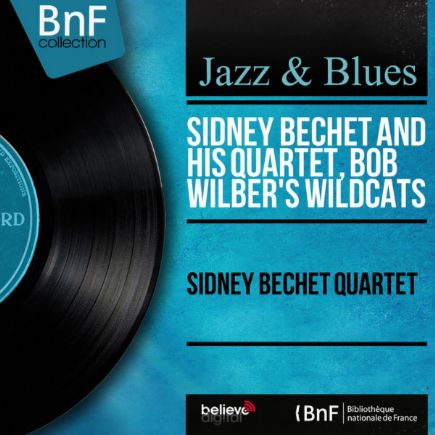Just One of Those Things: une miniature brillante
Écrite et composée par Cole Porter pour sa comédie musicale Jubilee, créée à Broadway en 1935 — dont est également issu le célèbre Begin the Beguine —, Just One of Those Things s’est imposée comme un standard incontournable du jazz. Interprétée aussi bien par des chanteurs que par des instrumentistes, elle séduit depuis des décennies par son équilibre subtil entre sophistication musicale et émotion contenue.
Cette chanson incarne à merveille l’esprit du Great American Songbook: une mélodie brillante, souple et chantante, associée à un texte empreint d’ironie tendre, presque mélancolique. Elle évoque une aventure amoureuse brève, mais précieuse, acceptée sans regret, avec une forme d’élégance désabusée typiquement porterienne, qui réside ici dans cette capacité à conjuguer légèreté formelle et profondeur émotionnelle.
Musicalement, Just One of Those Things se distingue par une structure harmonique fluide mais complexe, dont les modulations inattendues et les changements d’accords stimulent l’imagination des improvisateurs. Dès l’ère swing, les musiciens s’en sont emparés pour y explorer le rebond rythmique et la clarté de la ligne.
Quand Bechet réinvente le swing
Le 31 juillet 1947, à New York, Sidney Bechet enregistre une version remarquable de Just One of Those Things. Accompagné d’un trio soudé — Lloyd Phillips au piano, George « Pops » Foster à la contrebasse, Arthur Herbert à la batterie —, il livre une interprétation dense et fiévreuse, à mille lieues des lectures légères souvent associées à ce titre.
Sur son saxophone soprano, Bechet transforme la mélodie en une sorte de récit dramatique, gorgé de tensions et d’élans. Son phrasé, à la fois impérieux et lyrique, confère à la chanson un relief émotionnel saisissant. Ce n’est plus une simple évocation d’un amour passé, mais une méditation brûlante sur les détours du destin. Sa sonorité, toujours ronde et vibrante, traverse le swing du morceau comme un chant intérieur à la fois maîtrisé et impétueux et s’inscrit dans la lignée des grands solistes de la Nouvelle-Orléans, tout en y ajoutant une touche personnelle, avec un lyrisme et une intensité dramatique marqués.
Cet enregistrement, réalisé peu avant son retour triomphal en France, illustre parfaitement sa capacité à fusionner la tradition du New Orleans, l’élan du swing, et une forme très personnelle d’improvisation mélodique.
Just One of Those Things: una miniatura brillante
Escrita y compuesta por Cole Porter para su comedia musical Jubilee, estrenada en Broadway en 1935 — de la que también proviene la célebre Begin the Beguine —, Just One of Those Things se ha convertido en un estándar imprescindible del jazz. Interpretada tanto por cantantes como por instrumentistas, fascina desde hace décadas por su sutil equilibrio entre sofisticación musical y contención emocional.
Esta canción encarna a la perfección el espíritu del Great American Songbook: una melodía brillante, flexible y cantabile, unida a una letra impregnada de una ironía suave, casi melancólica. Evoca una historia de amor breve pero valiosa, aceptada sin remordimientos, con esa elegancia desencantada tan propia de Porter, que sabe conjugar ligereza formal y profundidad emocional.
En el plano musical, Just One of Those Things se distingue por una estructura armónica fluida pero compleja, con modulaciones inesperadas y cambios de acordes que estimulan la imaginación de los improvisadores. Desde la era del swing, los músicos han hecho de esta pieza un campo fértil para explorar tanto el rebote rítmico como la claridad melódica.
Cuando Bechet reinventa el swing
El 31 de julio de 1947, en Nueva York, Sidney Bechet graba una versión extraordinaria de Just One of Those Things. Acompañado por un trío sólido — Lloyd Phillips al piano, George « Pops » Foster al contrabajo y Arthur Herbert a la batería —, ofrece una interpretación densa y febril, muy alejada de las lecturas ligeras que a menudo se asocian con este tema.
Con su saxofón soprano, Bechet convierte la melodía en una especie de relato dramático, cargado de tensiones y de impulsos expresivos. Su fraseo, a la vez imperioso y lírico, confiere a la canción un relieve emocional impactante. Ya no se trata de una simple evocación de un amor pasado, sino de una meditación ardiente sobre los giros del destino. Su sonido, siempre redondo y vibrante, atraviesa el swing del tema como un canto interior, a la vez controlado e impetuoso, que se inscribe en la tradición de los grandes solistas de Nueva Orleans, aportándole al mismo tiempo un sello personal, marcado por el lirismo y la intensidad dramática.
Esta grabación, realizada poco antes de su regreso triunfal a Francia, ilustra perfectamente su capacidad para fusionar la tradición de Nueva Orleans, el impulso del swing y una forma muy personal de improvisación melódica.
Just One of Those Things: una miniatura brillante
Scritta e composta da Cole Porter per la commedia musicale Jubilee, andata in scena a Broadway nel 1935 — da cui proviene anche la celebre Begin the Beguine —, Just One of Those Things si è affermata come uno standard imprescindibile del jazz. Interpretata sia da cantanti che da strumentisti, seduce da decenni grazie al suo sottile equilibrio tra raffinatezza musicale ed emozione trattenuta.
Questa canzone incarna alla perfezione lo spirito del Great American Songbook: una melodia brillante, flessibile e cantabile, accompagnata da un testo intriso di ironia delicata, quasi malinconica. Racconta una storia d’amore breve ma preziosa, accolta senza rimpianti, con quella tipica eleganza disincantata di Porter, capace di unire leggerezza formale e profondità emotiva.
Dal punto di vista musicale, Just One of Those Things si distingue per una struttura armonica fluida ma articolata, con modulazioni impreviste e cambi di accordi che stimolano la fantasia degli improvvisatori. Già durante l’epoca dello swing, i musicisti hanno trovato in questo brano un terreno ideale per esplorare il ritmo e la limpidezza della linea melodica.
Quando Bechet reinventa lo swing
Il 31 luglio 1947, a New York, Sidney Bechet incide una versione straordinaria di Just One of Those Things. Accompagnato da un trio affiatato — Lloyd Phillips al pianoforte, George « Pops » Foster al contrabbasso, Arthur Herbert alla batteria —, offre un’interpretazione intensa e febbrile, lontanissima dalle letture leggere spesso associate a questo brano.
Con il suo sassofono soprano, Bechet trasforma la melodia in una sorta di racconto drammatico, carico di tensioni e slanci emotivi. Il suo fraseggio, al tempo stesso autorevole e lirico, dona al brano un rilievo emotivo sorprendente. Non si tratta più della semplice rievocazione di un amore passato, ma di una riflessione ardente sui percorsi imprevedibili del destino. Il suo suono, sempre rotondo e vibrante, attraversa lo swing del pezzo come un canto interiore, al contempo controllato e impetuoso, inserendosi nella scia dei grandi solisti di New Orleans, ma con una cifra espressiva personale, ricca di lirismo e drammaticità.
Questa registrazione, effettuata poco prima del suo ritorno trionfale in Francia, illustra perfettamente la sua capacità di fondere la tradizione di New Orleans, l’energia dello swing e una forma molto personale d’improvvisazione melodica.
Just One of Those Things: a brilliant miniature
Written and composed by Cole Porter for his Broadway musical Jubilee, premiered in 1935 — which also gave us the iconic Begin the Beguine — Just One of Those Things has become a staple of the jazz repertoire. Performed by both vocalists and instrumentalists, it has captivated audiences for decades with its delicate balance of musical sophistication and emotional restraint.
The song perfectly embodies the spirit of the Great American Songbook: a bright, flowing, and singable melody paired with lyrics steeped in gentle irony, tinged with melancholy. It reflects a fleeting love affair, cherished for what it was, and accepted without regret — all conveyed through Porter’s signature blend of lightness and emotional depth.
Musically, Just One of Those Things stands out for its smooth yet complex harmonic structure, with unexpected modulations and chord changes that spark the imagination of improvisers. Since the swing era, musicians have embraced it as a playground for rhythmic bounce and melodic clarity.
When Bechet reinvents the swing
On July 31, 1947, in New York, Sidney Bechet recorded a remarkable version of Just One of Those Things. Backed by a tight-knit trio — Lloyd Phillips on piano, George “Pops” Foster on bass, and Arthur Herbert on drums — he delivered a performance that is intense and feverish, far removed from the light-hearted renditions often associated with this tune.
Playing the soprano saxophone, Bechet transforms the melody into a kind of dramatic narrative, filled with tension and expressive surges. His phrasing, both commanding and lyrical, gives the song a striking emotional depth. It’s no longer just a wistful recollection of lost love, but a burning meditation on the twists of fate. His tone, always round and vibrant, carries through the swing of the piece like an inner voice — at once controlled and impassioned. It stands in the lineage of New Orleans soloists, yet brings a personal touch, marked by poignant lyricism and dramatic intensity.
This recording, made shortly before his triumphant return to France, perfectly illustrates his ability to fuse the New Orleans tradition, the drive of swing, and a highly personal approach to melodic improvisation.


